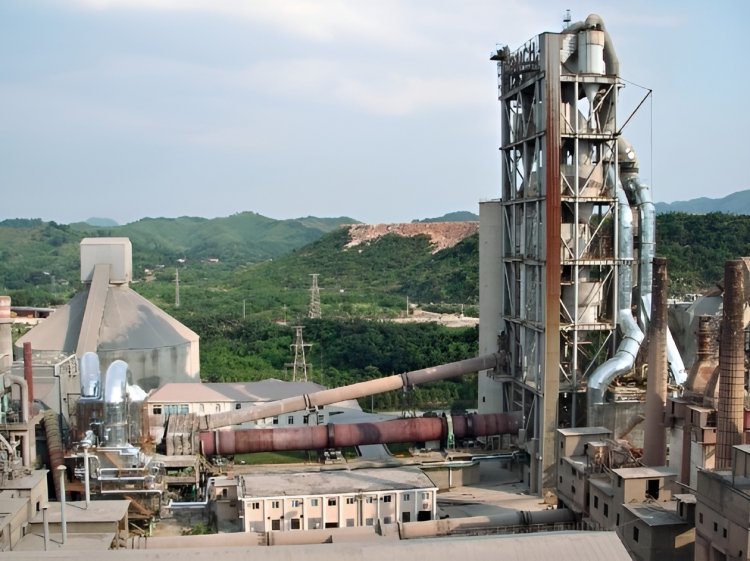Industrial Development in Nepal: Importance, Sectors, Challenges, and Potential
Discover the significance of industrial development in Nepal and the sectors that drive the country's economy. Learn about the prospects and challenges faced by the Nepalese industrial sector.

Nepal is a landlocked country located in South Asia, surrounded by India and China. The country has a diverse economy, with agriculture being the largest sector, contributing 23.95% of the Gross Domestic Product (GDP). According to CBS, the industrial sector is still in the developing stage, with a contribution of only 8.11% to the total GDP.
Sectors within the Industry of Nepal
The industrial sector in Nepal is divided into several sub-sectors, each contributing to the overall growth of the economy. The manufacturing sector, which falls under Section C of the National Standard Industrial Classification (NSIC), covers around 5.65% of the GDP. This sector is responsible for the production of a wide range of goods, including food products, non-metallic mineral products, basic metals, fabricated metal products, beverages, chemicals, and wood products.
The Electricity, gas, steam and air conditioning supply (section D of NSIC), mining and quarrying (section B of NSIC), and Water supply, sewerage, waste management and remediation activities (section E of NSIC) are other significant sub-sectors within the industrial sector. These three sectors contribute around 1.37%, 0.58%, and 0.51%, respectively, to the total GDP.
Top 10 Manufacturing Establishments
The top 10 manufacturing establishments in Nepal, in terms of value-added, are as follows:
- Manufacture of food products
- Manufacture of other non-metallic mineral products
- Electricity, gas, steam, and air conditioning supply
- Manufacture of basic metals
- Manufacture of fabricated metal products, except machinery and equipment
- Other manufacturing
- Manufacture of beverages
- Other mining and quarrying
- Manufacture of chemicals and chemical products
- Manufacture of wood and of products of wood and cork (except furniture), manufacture of straw and plaiting materials.
Importance of Industrial Development in Nepal
The development of the industrial sector is considered crucial for the growth of the Nepalese economy. It not only contributes to the expansion of the industrial sector but also affects other sectors of the economy. Some of the important aspects of industrial development in Nepal are:
-
Job Creation:
The growth of the industrial sector in Nepal leads to the creation of new job opportunities, reducing unemployment and underemployment. -
Boost to Economy:
The industrial sector contributes to the overall growth of the Nepalese economy, leading to an increase in the Gross Domestic Product (GDP). -
Improved Standard of Living:
The development of the industrial sector leads to an increase in the income of the people, thereby improving the standard of living. -
Improved Trade Balance:
The development of the industrial sector can lead to an increase in exports, thereby improving the trade balance and reducing the dependence on imports. -
Poverty Alleviation:
The growth of the industrial sector leads to employment generation and income expansion, supporting poverty alleviation. -
Technological Advancement:
The development of the industrial sector leads to the introduction of new and advanced technologies, improving productivity and competitiveness. -
Infrastructure Development:
The growth of the industrial sector leads to the development of infrastructure, including transportation and communication, leading to improved connectivity and accessibility.
Potential for Growth in the Industrial Sector in Nepal
Despite the relatively small contribution of the industrial sector to the overall GDP of Nepal, there is significant potential for growth in this sector. Some of the key areas that hold promise for growth include:
-
Strategic Location:
Nepal's strategic location between two large economies, India and China, offers opportunities for businesses to access large markets and increase their competitiveness. -
Abundant Natural Resources:
Nepal is rich in natural resources, including water, minerals, forests, and arable land. These resources can be harnessed to support the growth of the industrial sector. -
Favorable Government Policies:
The Nepalese government has taken several steps to promote the growth of the industrial sector. Policies aimed at reducing bureaucracy, promoting foreign investment, and providing tax incentives to businesses have been introduced to encourage industrial development. -
Skilled Labor Force:
Nepal has a large pool of skilled labor that can support the growth of the industrial sector. With proper training and development, this labor force can be an asset to the country's economy. -
Growing Consumer Market:
The Nepalese market is growing, and with increasing disposable income, there is a rising demand for consumer goods. This presents an opportunity for businesses to tap into the domestic market and increase their revenue.
Challenges of Industrial Development in Nepal
Despite the potential for growth in the industrial sector in Nepal, there are several challenges that hinder its development. Some of the key challenges are:
-
Lack of infrastructure:
Nepal lacks basic infrastructure such as roads, electricity, and water supply, which affects the growth of industries. -
Insufficient capital:
The lack of access to finance is a significant challenge for industrial development in Nepal. Many small and medium-sized industries face difficulty in obtaining loans, which hampers their growth and expansion. -
Limited technology and skills:
Nepal lacks modern technology and a skilled workforce, which affects the competitiveness of its industries. -
Political instability:
Political instability in Nepal has a significant impact on the industrial sector. The frequent change of government and unstable political environment hamper investment and industrial growth. -
Poor governance:
Corruption, red tape, and lack of transparency in the governance system affect the ease of doing business in Nepal, which discourages investment in the industrial sector. -
Lack of support from government:
The government has not provided enough support to the industrial sector in terms of subsidies, tax exemptions, and other incentives.
In conclusion, although the industrial sector in Nepal is still in the developing stage, there is significant potential for growth. The government and private sectors need to work together to tap into this potential and promote industrial development in Nepal. This will not only benefit the economy but also contribute to the overall well-being of the Nepalese people.
What's Your Reaction?







































































































